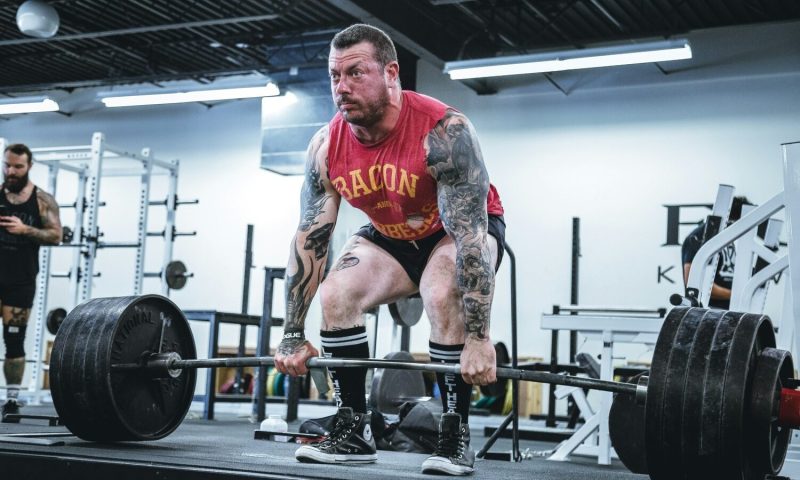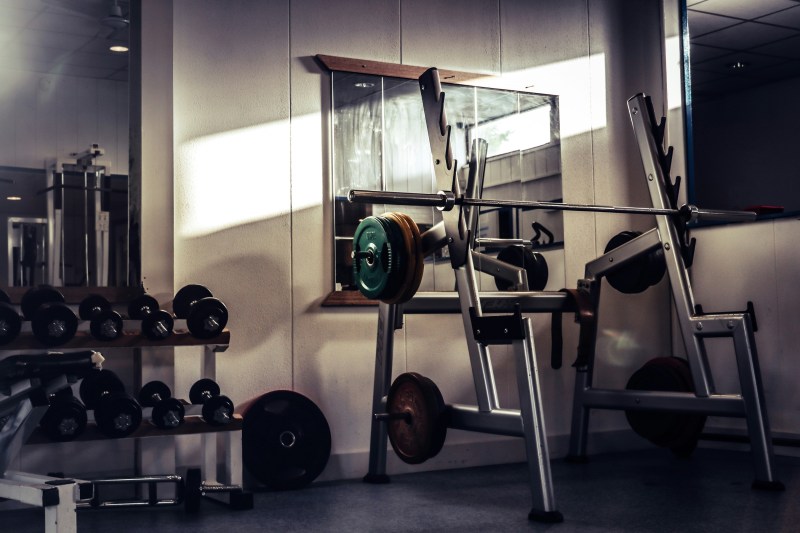Many gyms have both Olympic and standard barbells, but what exactly is the difference? As a personal trainer, this is a common question clients share with me as they navigate their weight training programs. No matter your fitness goals, including barbell training can be beneficial, and an NIH study shares that it can result in “improved physical performance, movement control, walking speed, functional independence, cognitive abilities, and self-esteem.”
So, we know that you should use barbells, but which one? Keep reading, and let’s see where you fall on the Olympic barbell vs. standard barbell debate!
What is the difference between an Olympic barbell and a standard barbell?

The main differences between an Olympic barbell and a standard barbell lie in their size, construction, and functionality. Olympic barbells are typically longer and heavier, with a standard weight of 45 pounds (20 kilograms) for men and 33 pounds (15 kilograms) for women. They have a 2-inch diameter sleeve that accommodates Olympic weight plates and includes rotating sleeves to reduce torque on the wrists during lifts. This rotation is achieved through bushings or bearings built into the sleeve.
Standard barbells, in contrast, usually weigh around 15 to 25 pounds and have a 1-inch diameter across the entire bar. They also do not feature rotating sleeves. They’re often made from lower-grade steel and lack the same level of tensile strength, which can affect durability and performance under heavier loads.
Additionally, it is important to note that Olympic bars tend to have more aggressive knurling and a higher weight capacity, making them better suited for advanced lifting demands.
When should you use an Olympic barbell?

You should use an Olympic barbell when performing exercises that involve heavy loads, explosive movements, or require smooth rotation for wrist safety. Olympic barbells are ideal for classic compound lifts such as deadlifts, squats, bench presses, and overhead presses due to their higher weight capacity and durable construction.
They’re also essential for Olympic lifts like the clean and jerk and snatch, where the bar’s rotating sleeves reduce strain on the wrists and shoulders during fast, dynamic movements. The added length and whip of an Olympic barbell make it suitable for athletes looking to train for power, speed, and strength under competition standards.
If you’re lifting heavy weights or training with high-volume barbell movements multiple times a week, an Olympic barbell provides the durability and performance needed. It’s also useful for accessory movements, such as barbell rows, hip thrusts, or push presses, where stability and consistent load distribution are crucial.
When should you use a standard barbell?

You should use a standard barbell when utilizing a lighter load, performing basic strength training, or working out in a home gym where heavy-duty equipment isn’t necessary. Standard barbells are well-suited for exercises like bicep curls, tricep extensions, upright rows, and light bench or shoulder presses. Their smaller diameter makes them easier to grip, especially for beginners or individuals with smaller hands.
Standard barbells are also ideal for people who aren’t lifting heavy enough to require the durability and rotation features of an Olympic barbell. Because standard bars typically weigh less and are shorter, they’re easier to move, load, and store, which can be helpful in compact workout spaces.
If your training goals focus on general fitness, toning, or moderate strength gains rather than maximum performance, a standard barbell can effectively meet your needs. It’s a practical choice for casual lifters, beginners, or anyone looking for a simple, low-maintenance barbell option.
Price, space, and other considerations

When choosing between Olympic and standard barbells, there are other factors to take into consideration beyond your immediate goals and what exercises are in your workout plan. For example, Olympic barbells are generally more expensive due to their higher-quality materials, rotating sleeves, and increased load capacity. They also require Olympic-sized plates, which can further increase the overall cost of your setup. Standard barbells, on the other hand, are more affordable and often sold in beginner-friendly sets with matching plates.
Space is another key consideration. Olympic barbells are longer — usually around seven feet — which may not be practical in small home gyms or apartments. Standard barbells are shorter and easier to store, making them more suitable for limited spaces.
Other factors include long-term goals and durability. Olympic barbells are built to withstand frequent, heavy lifting, while standard bars may bend or wear out over time if overloaded. If you’re planning to lift progressively heavier or train regularly, investing in an Olympic setup may be more cost-effective in the long run.
Frequently asked questions

Are all Olympic bars 45 pounds?
Not all Olympic bars are 45 pounds, but most standard men’s Olympic bars weigh 45 pounds (20 kilograms). Women’s Olympic bars typically weigh 33 pounds (15 kilograms), and there are also lighter training bars available. Always check the bar’s specifications — especially in home gyms or specialty lifting environments — for accurate weight.
Why are Olympic barbells so expensive?
Olympic barbells are expensive because they’re made with high-quality steel, precise engineering, and features like rotating sleeves for safety and performance. They’re designed to handle heavy loads, reduce whip, and last through years of intense lifting. Manufacturing standards and durability also raise the cost compared to standard barbells.
Do standard barbells bend?
Standard barbells can bend, especially under heavy loads or over time. They’re typically made with lower-grade steel and lack the tensile strength of Olympic bars. Frequent use, improper storage, or lifting beyond the bar’s capacity can lead to permanent warping, making them less reliable for serious strength training.




